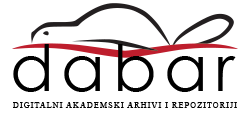Title Usporedba učinkovitosti niskoenergetskog lasera i akupunkture u liječenju hiposalivacije Title (english) Comparison of the low level laser and acupuncture in the treatment of hyposalivation Author Diana Terlević Dabić Mentor Vanja Vučićević-Boras (mentor)Committee member Ivan Alajbeg (predsjednik povjerenstva)Committee member Vlaho Brailo (član povjerenstva)Committee member Vanja Bašić Kes (član povjerenstva)Committee member Zlatko Trkanjec (član povjerenstva)Committee member Nazif Demoli (član povjerenstva)Granter University of Zagreb Defense date and country 2016-06-15, Croatia Scientific / art field, BIOMEDICINE AND HEALTHCARE Universal decimal classificationUDC ) 616.31 - Stomatology Abstract Hiposalivacija je stanje smanjenog lučenja sline koje može biti uzrokovano lijekovima, zračenjem glave i vrata u liječenju karcinoma glave i vrata, a može se javiti i kod nekih sistemskih bolesti poput Sjogrenovog sindroma i dr. Hiposalivacija je vrlo neugodan simptom za pacijente jer je stoga stalno prisutna sprječavanje govora, žvakanja i gutanja. Osim ovih, postoji jača sklonost razvoju karijesa, gingivitisa i kandidijaze zbog nedostatka sline. U svjetskoj literaturi postoje različiti lokalni i sistemski pripravci za ublažavanje simptoma suhih usta u bolesnika, no svaki od njih ima svoje prednosti i nedostatke. Cilj ovoga rada je bila usporediti učinkovitost akupunkture, niske razine laserske terapije (LLLT) i vode u 67 pacijenata s hiposalivacijom uzrokovanom lijekovima.
Metode: Prije terapije svaki sudionik je ispunio upitnik o kvaliteti života na hrvatskom jeziku (OHIP-14 CRO) te je mjerena količina sline jednostavnom metodom izbacivanja sline u kalibrirane epruvete u trajanju od 5 minuta ujutro između 8 i 11 ujutro Oba postupka ponovljena su nakon završetka svake terapije. Laser niske razine Terapija (GaAlAs, valna duljina 830 nm; doza 1,80 J/cm2; snaga 35 mW, površina 4 cm2, frekvencija 5,20 Hz, puls 800 ms; period 1 ms) provodila se svakim radnim danom tijekom 14 dana. a svaka je sesija trajala 15 minuta na području kože iznad velikih žlijezda slinovnica u 28 pacijenata. U 16 sudionika kontrolne skupine provedeno je LLLT laserskim uređajem koji je bio isključen. Akupunktura je izvedena iglama (0,16x10mm) zabodenim u sljedeće točke; Shen Man, nulta točka, autonomna točka, točka žeđi, žlijezda slinovnica F na oba uha dok su sudionici sjedili 30 minuta kod akupunkturiste. Nakon što su sudionici dobili press igle (0,16x1,4 mm) na jedno uho na bodove Shen Men i Thirst Point do sljedeće sesije. Druga seansa akupunkture bila je tjedan dana nakon prve, a preostale tri svakih sedam dana. Statistička obrada provedena je Studentovim t testom za zavisne i nezavisne uzorke.
Rezultati: Rezultati ovog istraživanja pokazali su da je akupunktura bila superiornija u odnosu na LLLT i isključila LLLT na temelju povećanog protoka sline i upitnika o kvaliteti života. LLLT je povećao protok sline, međutim, nije bilo značajnog poboljšanja u rezultatima upitnika o kvaliteti života. LLLT, kada je isključen, nije povećati brzinu protoka sline niti OHIP-CRO rezultate značajno.
Zaključak: Mogli bismo zaključiti da je stimulacija žlijezda slinovnica korištenjem akupunkture povećala brzinu protoka sline u bolesnika s hiposalivacijom izazvanom lijekovima, kao i poboljšane rezultate OHIPCRO-a. Uključivanje LLLT-a također je povećalo brzinu protoka sline kod ovih pacijenata, međutim rezultati OHIP CRO nisu se značajno razlikovali. Prelazak s LLLT nije povećao brzinu protoka sline niti poboljšao rezultate OHIP-CRO.
Abstract (english) Background and objectives: Hyposalivation is a state of reduced secretion of saliva which can be caused by drugs, by radiation to the head and neck in order to treat head and neck cancers, and can occur in some systemic diseases such as Sjogren's syndrome, etc. Hyposalivation is a very annoying symptom for patients as it is constantly present, thus
preventing speech, chewing and swallowing. In addition to these, there is a stronger tendency to develop caries, gingivitis and candidiasis due to lack of saliva. In the literature around the world there are various local and systemic preparations to facilitate the symptoms of dry mouth in patients, although each of them has advantages and disadvantages. The aim of this
study was to compare the efficacy of acupuncture, low level laser therapy (LLLT) and water in 67 patients with hyposalivation caused by drugs.
Methods: Before therapies each participant filled out a questionnaire on the quality of life in the Croatian language (OHIP-14 CRO) and the amount of saliva was measured by simple method of ejecting saliva into calibrated tubes for 5 minutes in the morning between 8 and 11 A.M. Both procedures were repeated after the completion of each therapy. Low Level Laser
Therapy (GaAlAs, 830 nm wavelength; dose 1,80 J/cm2; power 35 mW, area 4 cm2, frequency 5,20 Hz, pulse 800 ms; period 1 ms) was carried out every working day in the course of 14 days and each session lasted 15 minutes on the skin area above the major salivary glands in 28 patients. In 16 participants of the control group, LLLT was conducted
with laser device which was switched off. Acupuncture was performed by use of needles (0,16x10mm) inserted on the following points; Shen Man, Point Zero, Autonomic Point, Thirst Point, Salivary Gland F on both ears while the participants were sitting for 30 minutes at the acupuncturist. After the participants got press needles (0,16x1,4 mm) on one ear at the
points Shen Men and Thirst Point till the next session. Second acupuncture session was one week after the first one and the remaining three every seven days. Statistical analysis was performed by use of Student t test for dependent and independent samples.
Results: The results of this study have shown that acupuncture was superior in comparison to the LLLT and switched off LLLT on the basis of increased salivary flow rate and the quality of life questionnaire. LLLT increased salivary flow rate, however, there was no significant improvement in scores of the quality of life questionnaire. LLLT, when switched off, did not
increase salivary flow rate nor OHIP-CRO scores significantly.
Conclusion: We might conclude that salivary gland stimulation by use of acupuncture increased salivary flow rate in patients with drug-induced hyposalivation as well as improved scores of OHIPCRO. Switched on LLLT also increased salivary flow rate in these patients, however OHIP CRO scores were not signifiantly different. Switched of LLLT neither increased salivary flow rate nor improved OHIP-CRO scores.
Keywords
hiposalivacija
terapija niskoenergetskim laserom
akupunktura
Keywords (english)
hyposalivation
low level laser therapy
acupuncture
Language croatian URN:NBN urn:nbn:hr:127:472217 Study programme Title: dental medicine Type of resource Text File origin Born digital Access conditions Open access Terms of use Repository University of Zagreb School of Dental Medicine Repository Created on 2017-04-24 11:47:34

